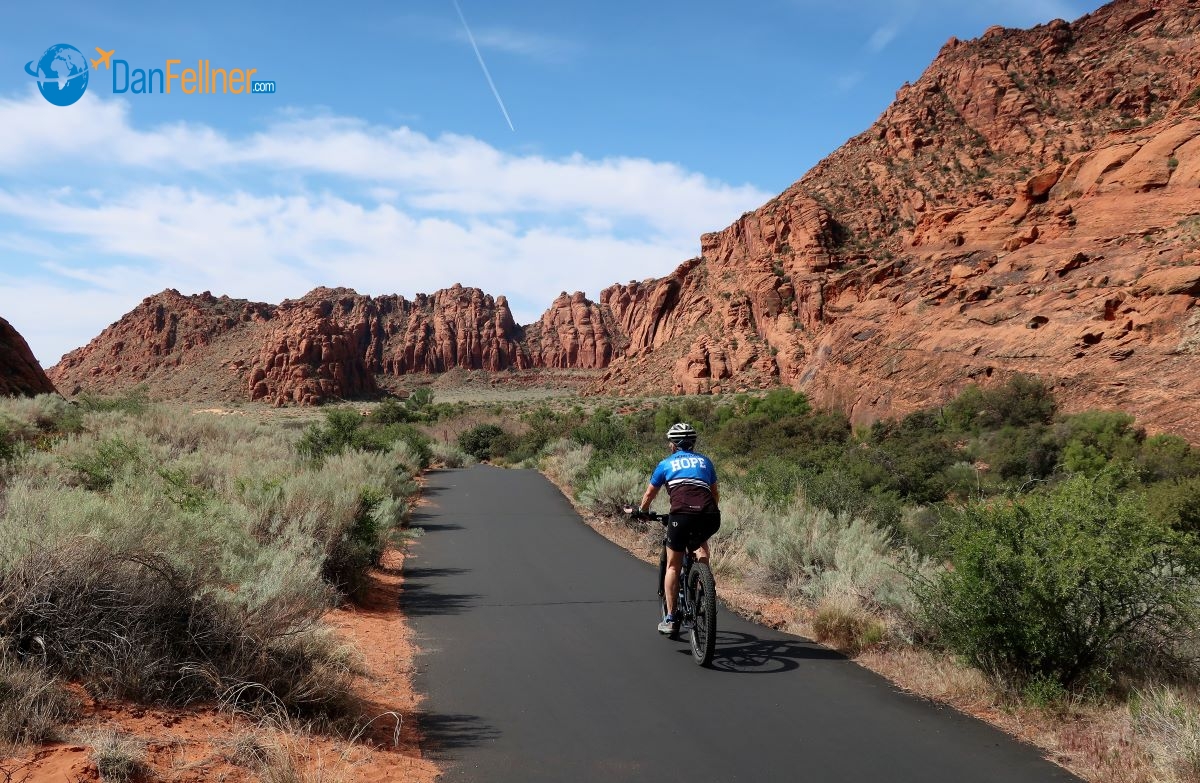Red-rock canyons, ghost towns and artsy, new-age villages fun to explore on two-wheelers in southwestern Utah
The Arizona Republic — May 9, 2021
IVINS, Utah – Don’t be fooled by the name. The only white stuff you’re likely to see in Snow Canyon State Park in southwestern Utah is the creamy white cliffs made of Navajo sandstone that form a stunning natural amphitheater at the northern end of the canyon.

An e-bike tour heads into Snow Canyon State Park in southwestern Utah.
True, Snow Canyon isn’t suitable for skiing or sledding. It is, however, ideal for cyclists who want to pedal through a strikingly colorful canyon full of black-lava flows, burnt orange sand dunes and a diversity of plants and wildlife, including the threatened Mojave Desert tortoise.
Our bike ride through the canyon – named after prominent 19th century Utah pioneers Lorenzo and Erastus Snow — was the highlight of a late April three-day biking adventure in Greater Zion, a 2,400-square mile area of southwestern Utah that encompasses Zion National Park and the city of St. George.

The Greater Zion area offers plenty of off-road biking trails with dramatic views.
We rented battery-powered e-bikes for all of our treks, which gave us a little extra juice when needed to help propel us up steep hills on gravelly paths and through headwinds that regularly exceeded 20 mph. Bike rental shops are plentiful in Greater Zion, including one outside the national park, but it’s a good idea to reserve a cycle in advance.
Snow Canyon State Park
While Zion and Bryce national parks draw bigger crowds, Snow Canyon is more compact (only 3.5 miles long), user-friendly and far less expensive. It’s where you’re likely to see the locals spend a morning absorbing the “positive energy” of the canyon’s rock formations before shopping at the Red Cliffs Mall in the city of St. George, a 15-minute drive away.
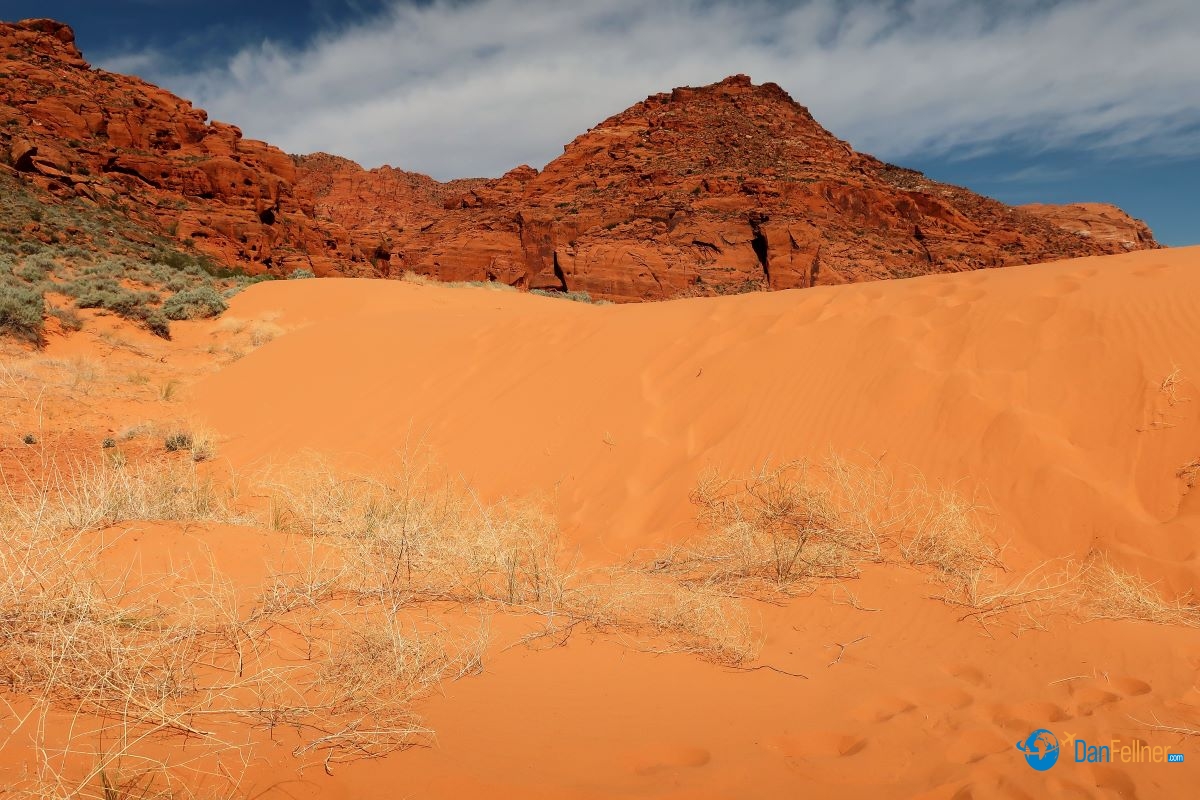
Burnt orange sand dunes at the base of sandstone cliffs in Snow Canyon State Park in Ivins, Utah.
Indeed, there is a new-age, Sedona-like vibe to Greater Zion. While dining at the Red Mountain Resort – just a mile outside the southern entrance to Snow Canyon – I had my first-ever “antioxidant” salad followed by a bowl of quinoa soup. From our hotel room we could see a spiritual labyrinth – a circular maze of red rocks – where fellow guests would go for early-morning meditative walks. It’s the only hotel at which I’ve stayed that has a “shaman spirit guide” on its staff.
At Snow Canyon, we biked the Whiptail Trail, a 6-mile roundtrip with gentle slopes on a paved surface, which we shared with joggers, hikers and other cyclists. (see video shot by the author: Biking the Whiptail Trail in Snow Canyon).
There isn’t a lot of vehicular traffic in Snow Canyon and we felt safe biking on the main roads. Plan on at least two hours to bike through the park. There also are 38 miles of hiking paths, 15 miles of equestrian trails and a 33-unit campground. I especially enjoyed hiking through some of the park’s numerous black lava fields, vivid remnants of long-ago volcanic eruptions.

Fields of black lava, the vivid remains of long-ago volcanic eruptions, punctuate the hills in Snow Canyon State Park in Ivins, Utah.
Here are three other biking trips we enjoyed in the Greater Zion area, all of which are suitable for both casual and serious cyclists:
Kayenta Art Village
Five miles west of Snow Canyon State Park in Ivins, Kayenta is a 2,200-acre residential community surrounded by an extraordinary landscape of red mountains. Pedal too quickly and you’ll miss seeing some of Kayenta’s unique homes, which have been built to blend in seamlessly with the high-desert topography.
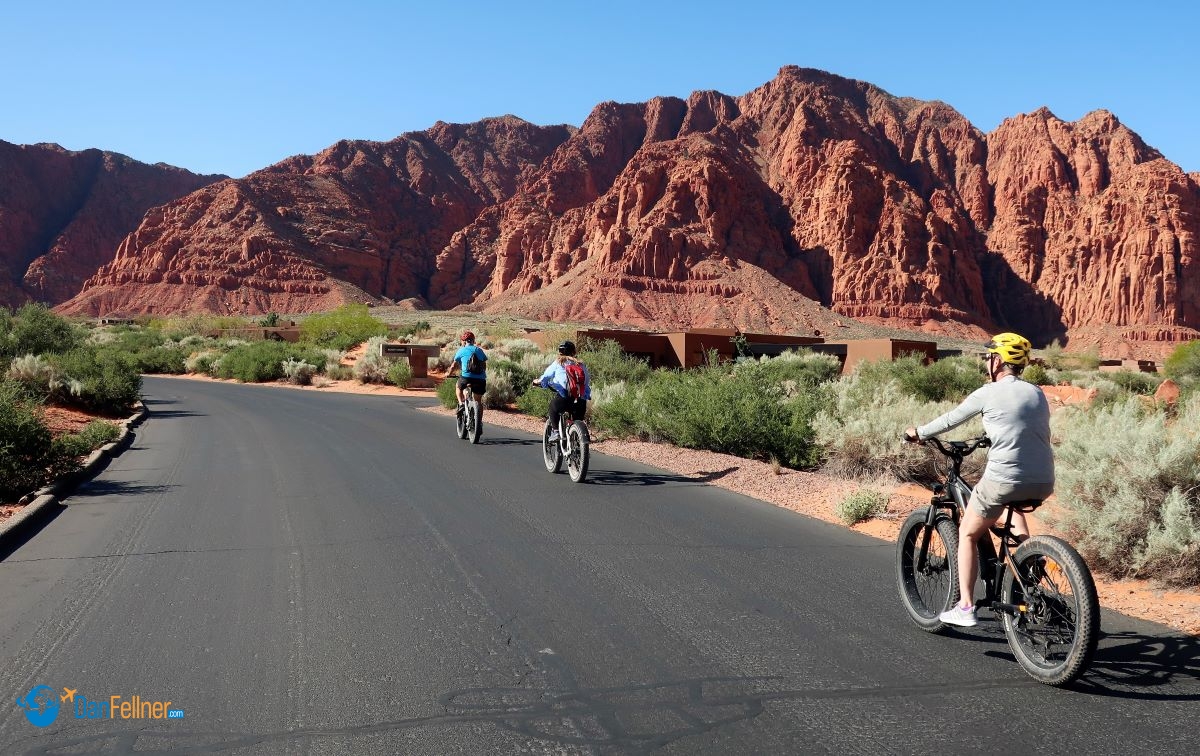
We joined a three-hour, 18-mile e-bike tour that started at the Red Mountain Resort and took us through the quiet streets of Ivins into Kayenta Art Village, a cluster of galleries, a theater and bike-rental shop.
A block from the village, we stopped at the Desert Rose Labyrinth and Sculpture Garden. The labyrinth was built by local residents using 1,800 indigenous red stones and is patterned after a famous 12th-century labyrinth in France.
Navigate the maze to a large boulder in the center of the labyrinth and — according to an inscription at the site — you will be rewarded with “a sense of peace, new insight and enlightenment.”
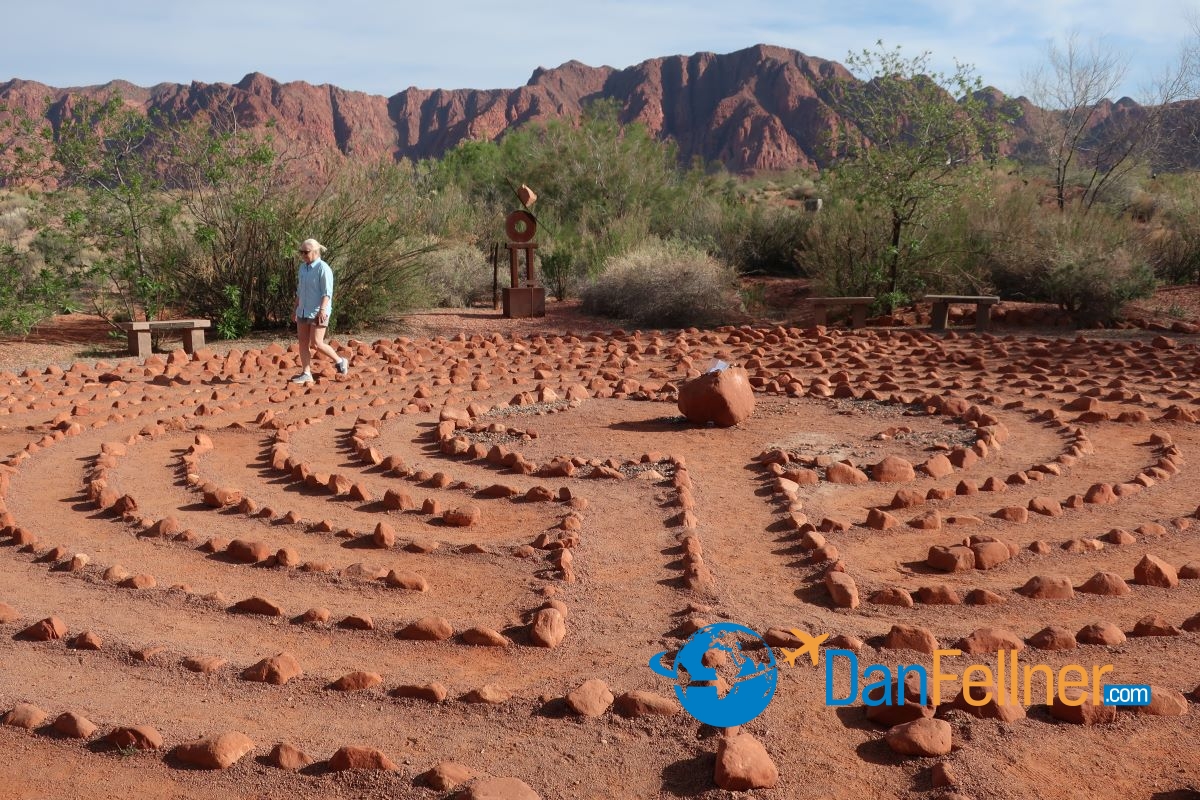
The Desert Rose Labyrinth and Sculpture Garden is a place for meditative walks in Kayenta, Utah.
Having conquered the labyrinth, I was ready for sustenance of a different sort. It was lunchtime and I walked back to the Xetava Gardens Café in Kayenta — voted by Trip Advisor as the best restaurant in the Ivins area — for a tasty platter of salmon tacos.
Grafton Ghost Town
Fans of the 1969 movie “Butch Cassidy and the Sundance Kid” will enjoy visiting Grafton, a ghost town west of Zion National Park off Utah Route 9 near the town of Rockville.
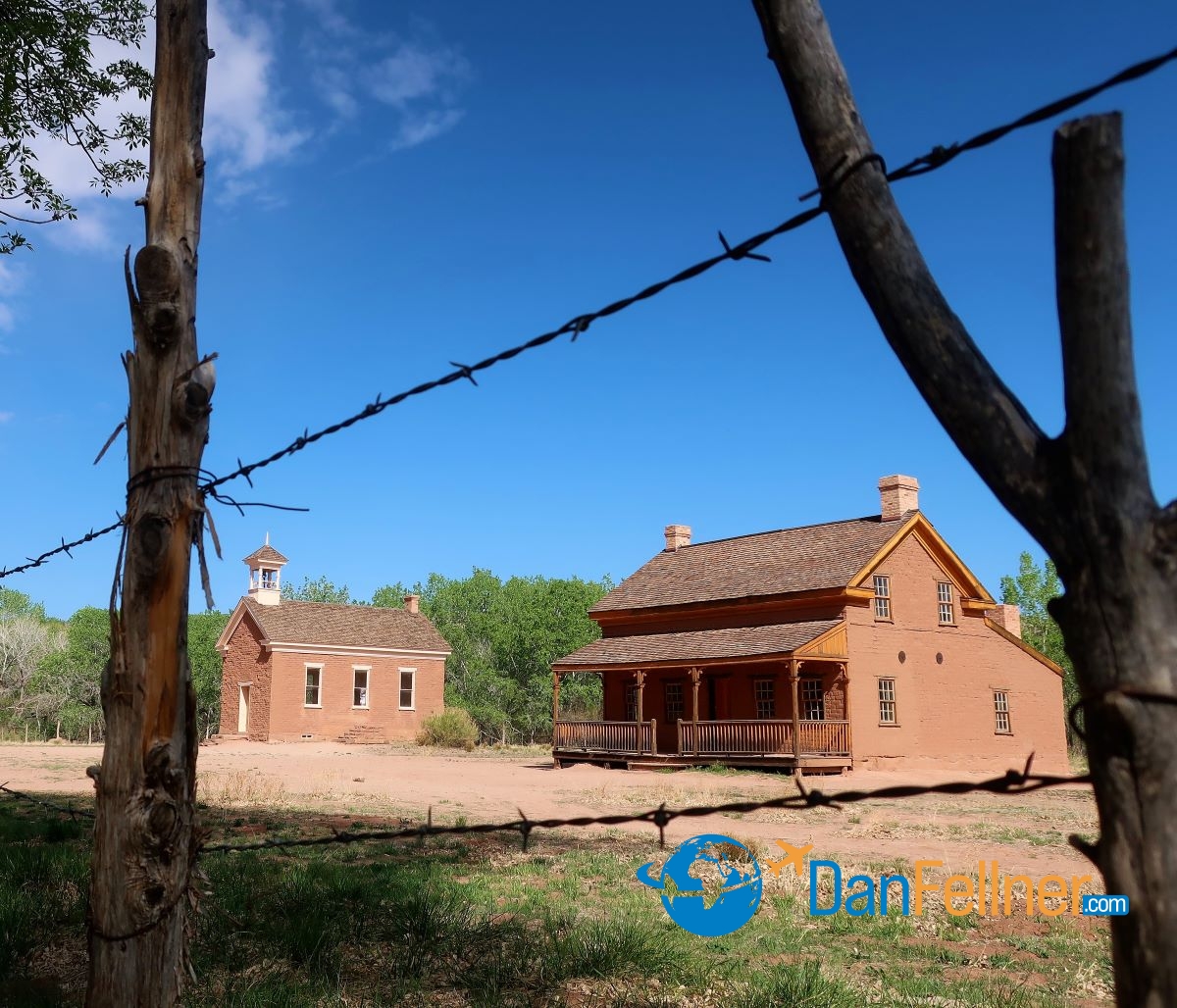
The Grafton ghost town in southwestern Utah, where an iconic scene in “Butch Cassidy and The Sundance Kid” was filmed.
The iconic scene in which Butch – played by Paul Newman – performed bicycle stunts before crashing through a fence, was filmed in Grafton. Movie buffs will remember that the scene featured the hit “Raindrops Keep Fallin’ on My Head,” which won an Oscar for Best Original Song.
Grafton was founded in 1859 by Mormon pioneers, who planted cotton and other crops. At one point, the population swelled to more than 150. But flooding caused the nearby Virgin River to be diverted, which ultimately led to Grafton’s demise. The last residents left in 1944.
Today, only a couple of structures remain, including a building that served as the town’s school and church. It’s closed but there is a well-preserved house open to visitors. About a half-mile away is the town cemetery, with dusty graves dating back to 1862.
Grafton is tricky to find – there are few signs pointing the way – and a portion of the ride is on unpaved roads. We opted to hire a guide from Zion Adventures, a tour company based in Springdale on the outskirts of Zion National Park.
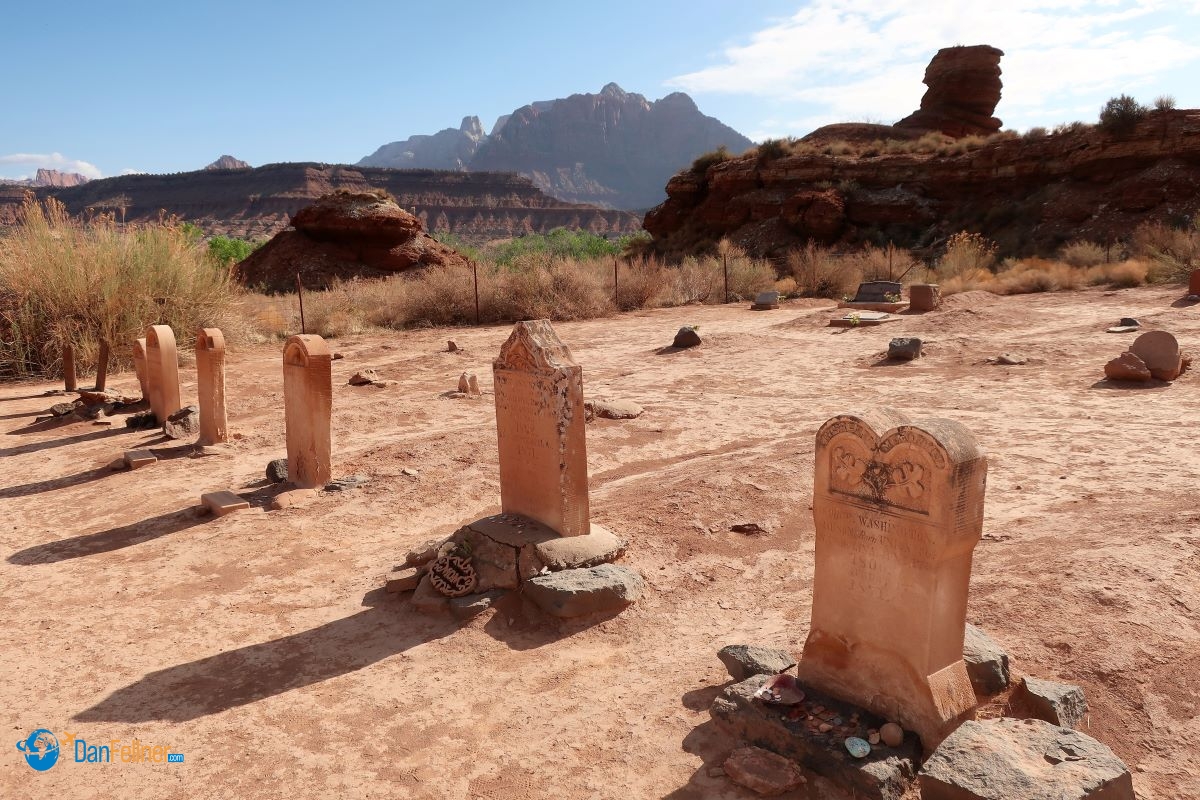
The Grafton cemetery near Rockville, Utah. There are graves dating back to 1862.
Zion National Park
There is a reason Zion is the fourth-most visited national park in the country. The reddish and tan sandstone cliffs soaring over a narrow canyon carved by the Virgin River, its unique geologic formations and diversity of wildlife make it a nature-lover’s paradise.
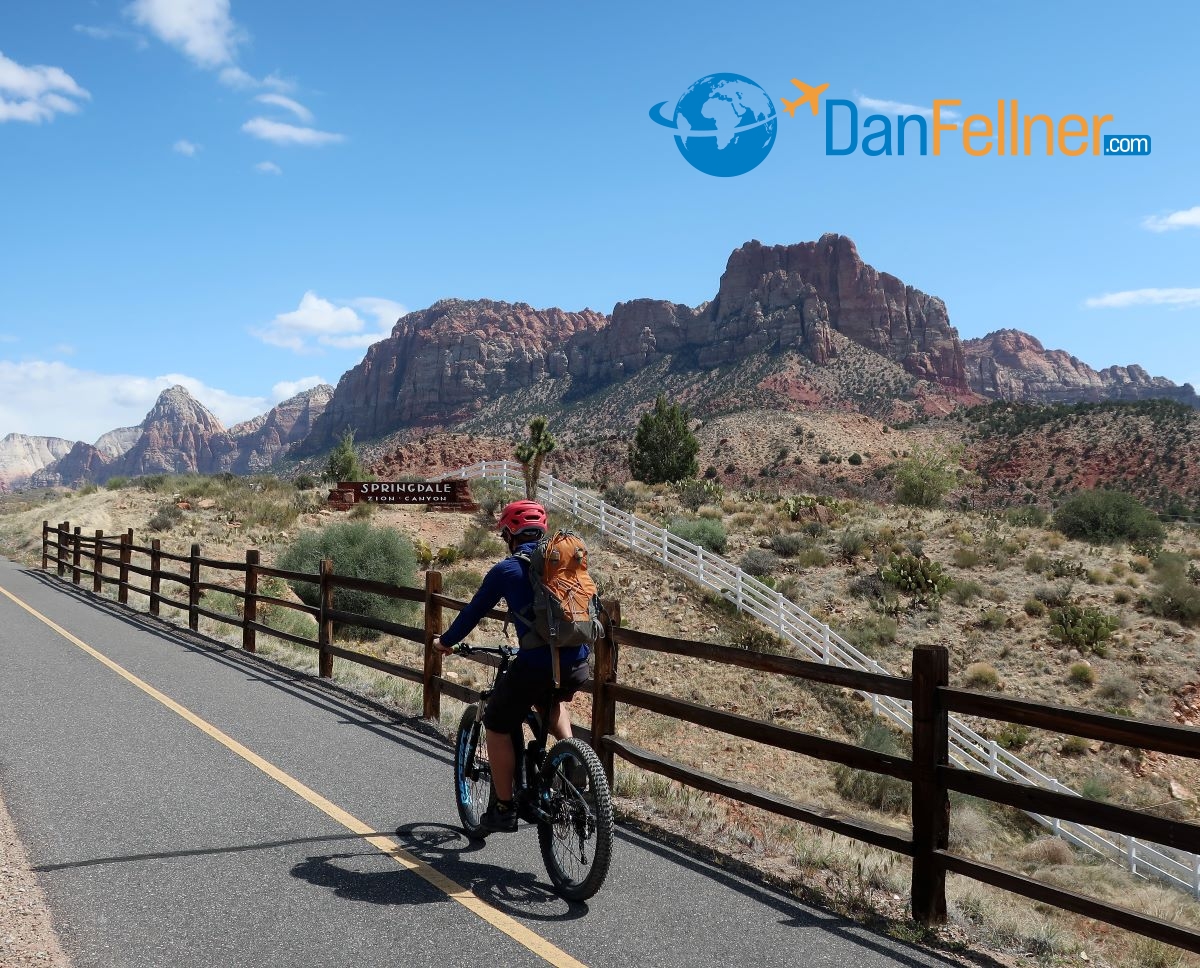
One of the numerous biking trails near Zion National Park in southwestern Utah.
But Zion is much more suited for hiking than biking. There is only one bike trail in the park, the 1.7-mile Pa’rus Trail, which begins near the Visitors Center and ends at Canyon Junction. Along the way, it crosses the Virgin River in several places over wooden bridges.
The trail also is open to hikers and pets, which can make it congested. Bikers are allowed on Zion’s narrow main roads but are asked to pull over to make room for the frequent shuttle buses.
A park ranger told me that there has been a spike in biking in Zion since the pandemic started, as many visitors haven’t been comfortable riding the shuttle buses. As a result, he said, the park is looking at ways of adding more bike paths.
Website for more info:
Greater Zion Convention & Tourism Office

The Pa’rus Trail inside Zion National Park.
© 2021 Dan Fellner

